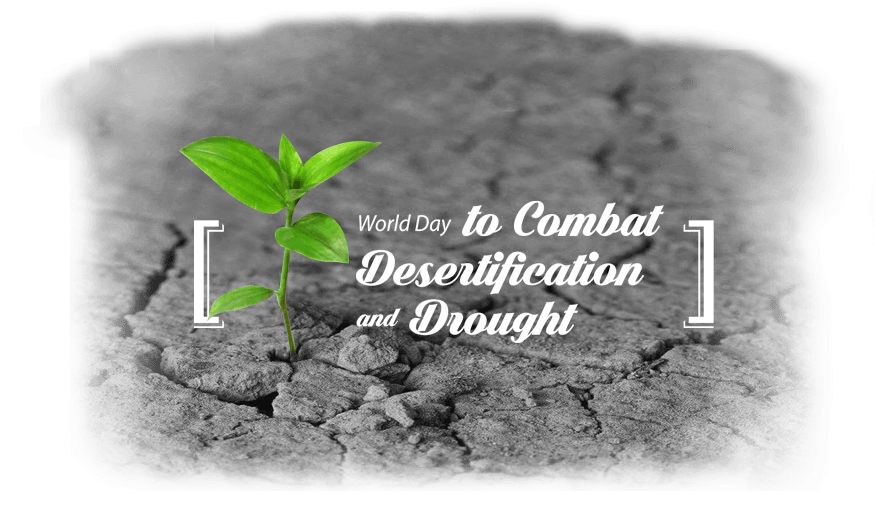
Desertification is the degradation of land in arid, semi-arid and dry sub-humid areas. It is caused primarily by human activities and climatic variations. Desertification does not refer to the expansion of existing deserts. It occurs because dryland ecosystems, which cover over one third of the world‘s land area, are extremely vulnerable to overexploitation and inappropriate land use. Poverty, political instability, deforestation, overgrazing and bad irrigation practices can all undermine the productivity of the land.
Over 250 million people are directly affected by desertification, and about one billion people in over one hundred countries are at risk. These people include many of the world‘s poorest, most marginalized and politically weak citizens.
The World Day to Combat Desertification and Drought is observed every year to promote public awareness of international efforts to combat desertification. The day is a unique moment to remind everyone that land degradation neutrality is achievable through problem-solving, strong community involvement and co-operation at all levels.
This year the World Day to Combat Desertification and Drought examine the important link between land degradation and migration. Among others, environmental degradation, food insecurity and poverty are causes of migration and development challenges.
In just 15 years, the number of international migrants worldwide has risen from 173 million in 2000 to 244 million in 2015.
This year's celebration looks at specific ways local communities can build resilience against current multi-fold development challenges through sustainable land management practices. This day should remind everyone of land’s important role in producing food and generating local employment, as well as its ability to add to the sustainability, stability and security of desertification-affected places. Ouagadougou, the capital of Burkina Faso, hosts the global observance of 2017, organized by the Ministry of Environment, Green Economy and Climate Change.



